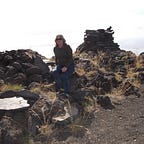Early Inhabitants of Gran Canaria
A Mystery Solved and Other Fascinating Facts
Gran Canaria
All the Canary Islands have volcanic origins, and Gran Canaria was formed some 14–9 million years ago; its main type of rock is basalt. It is the third largest island in the archipelago by area (1.560 sq km/602 sq miles), after Tenerife and Fuerteventura. It’s also the third tallest, after Tenerife and La Palma; Gran Canaria’s highest point is Morro de la Agujereada at 1.956 meters (6,417 feet).
The first known inhabitants of all the Canary Islands were Amazigh Berbers, from the regions now Libya and Sahara. They arrived around 3,000 years ago; evidence of their presence has been dated to between 500 BCE and the 15th century Spanish conquest.
Several tribes made their homes there, calling Gran Canaria: “Tamaran.” They grew grain, and kept pigs, sheep, and goats. Inhabitants of different islands largely remained isolated; there is no sign of travel between them, and each had its own individual culture. There are very few drawings of boats from that time.
The sub-tropical climate suits most agriculture, though later Spanish invaders destroyed much of the forests by logging and more intensive farming. Gran Canaria has large areas of flat land, ideal for agriculture. Its valleys have fertile…
